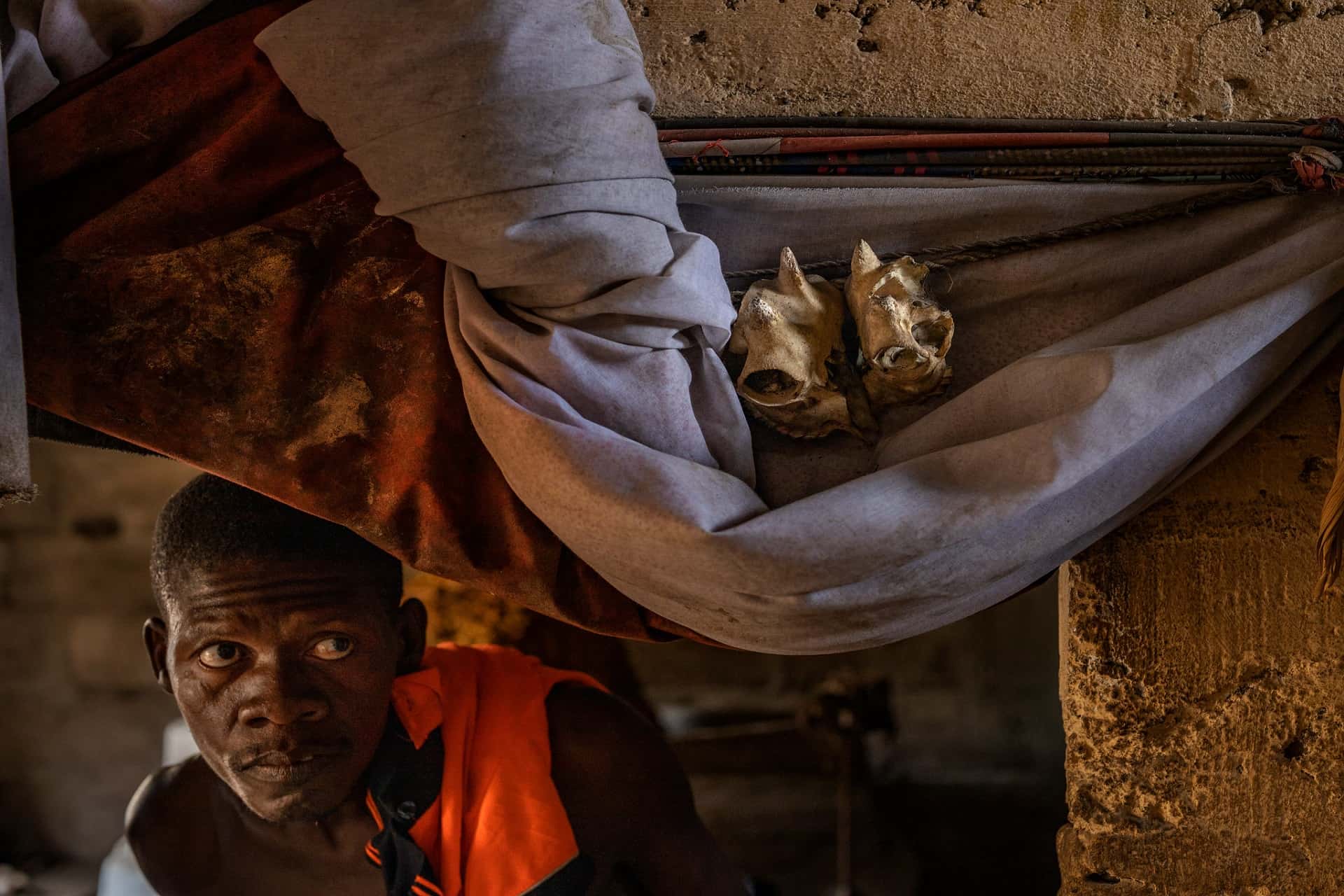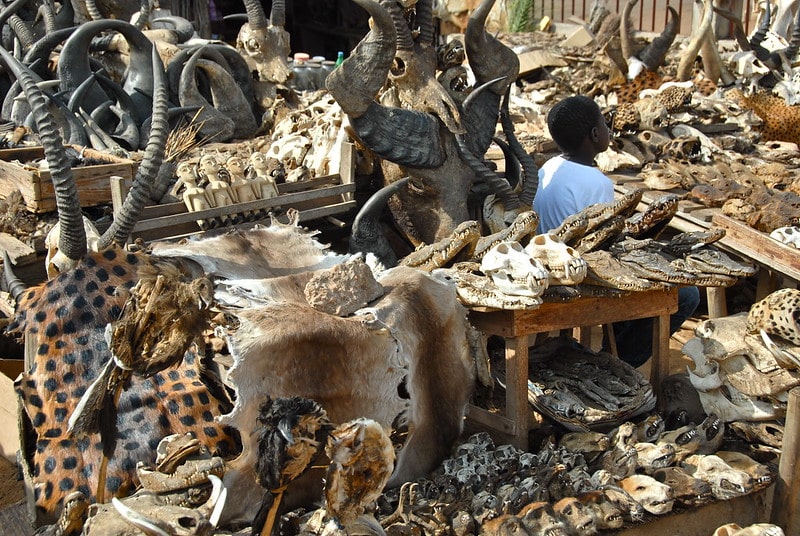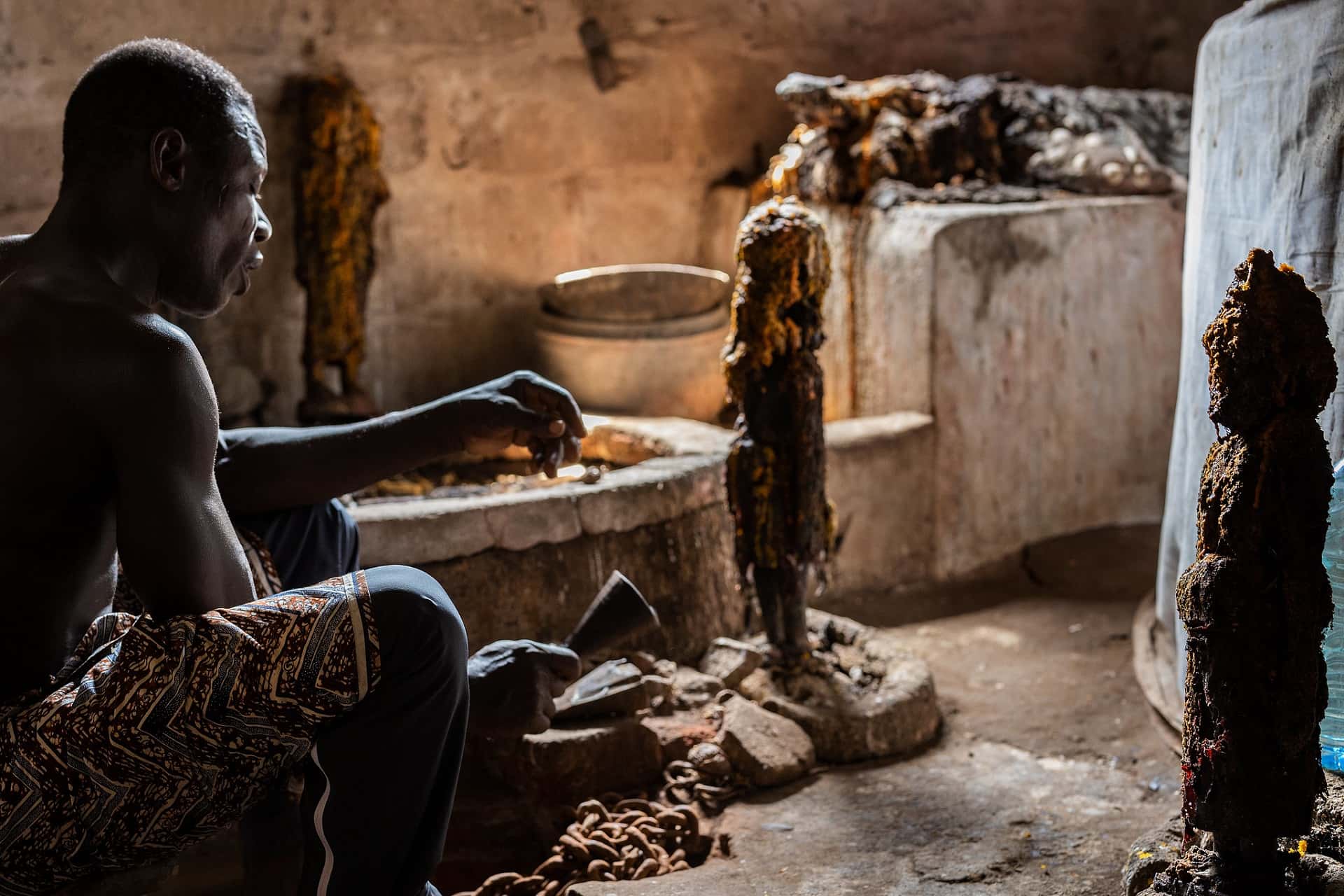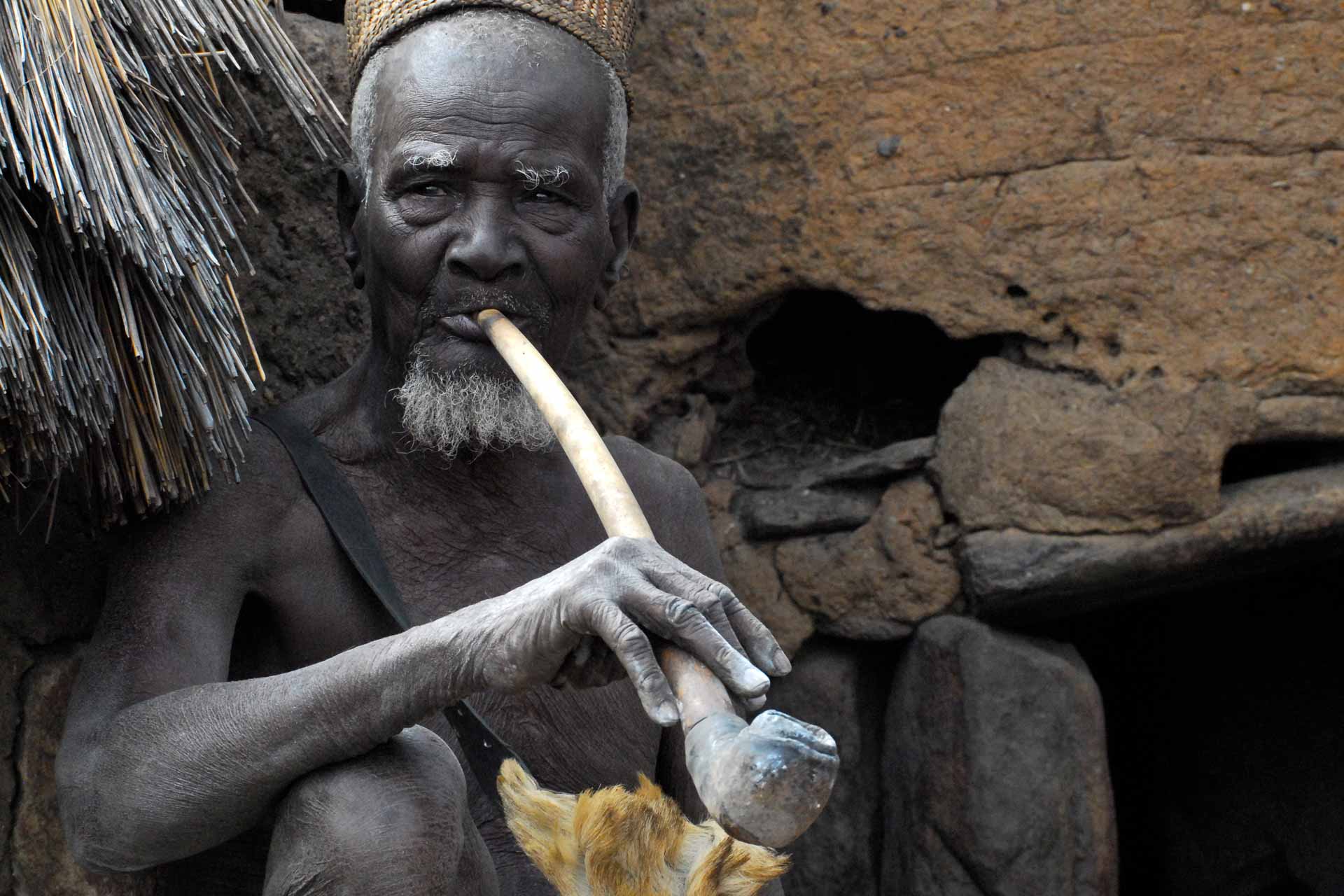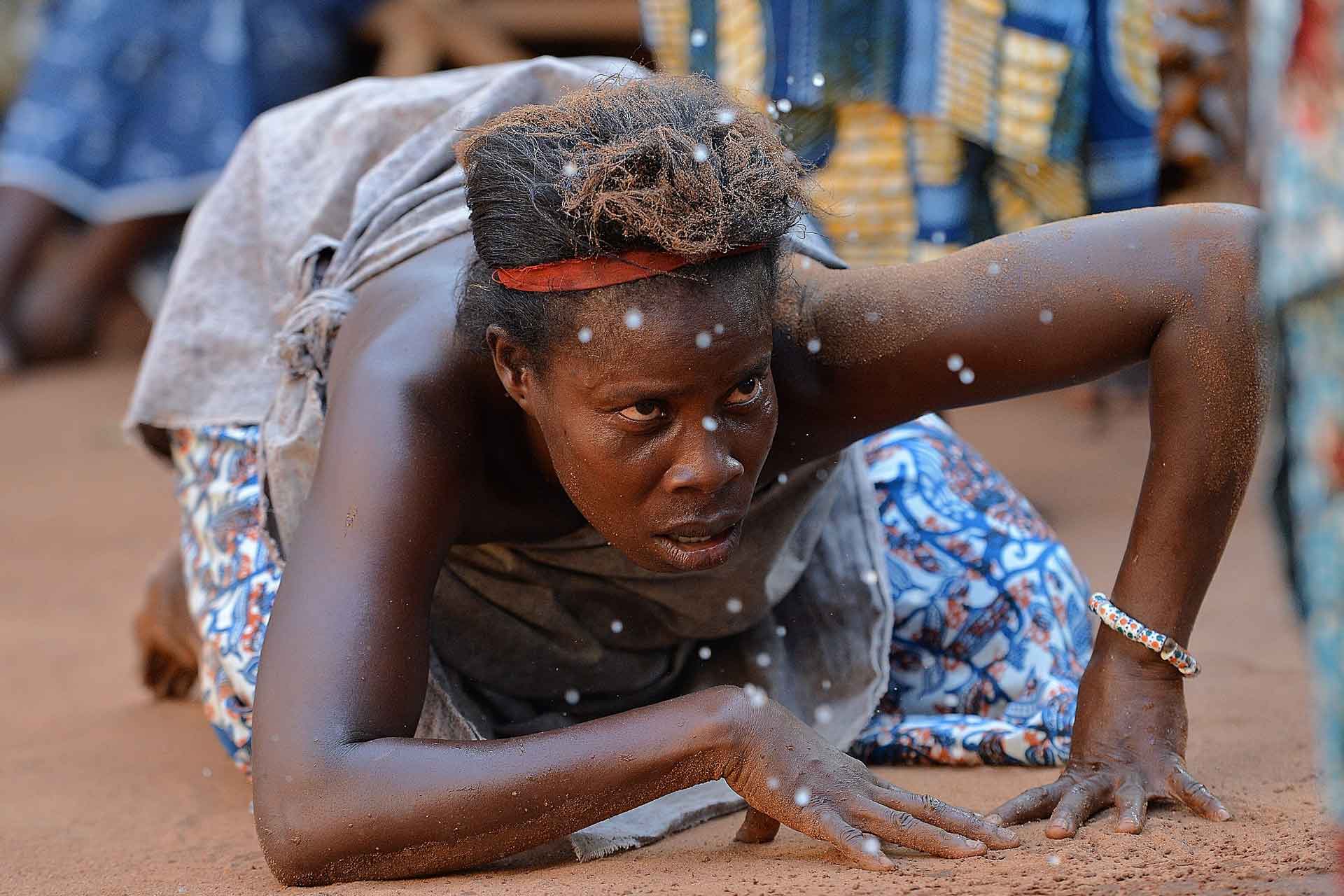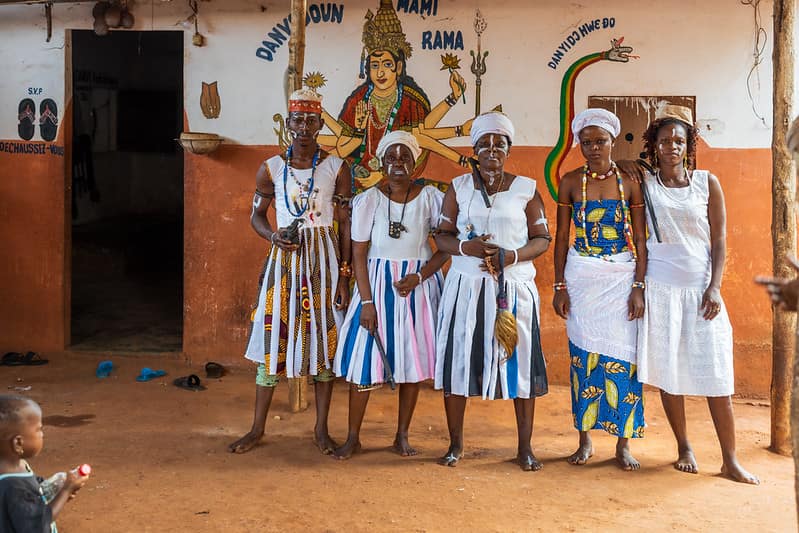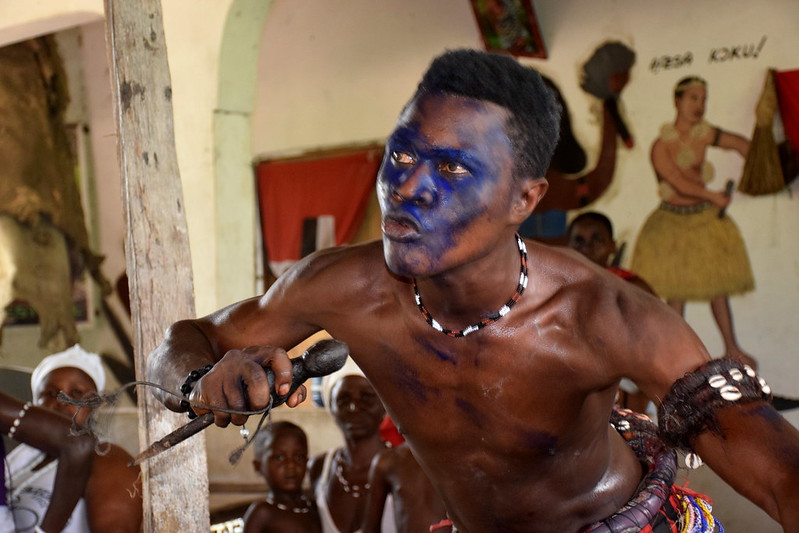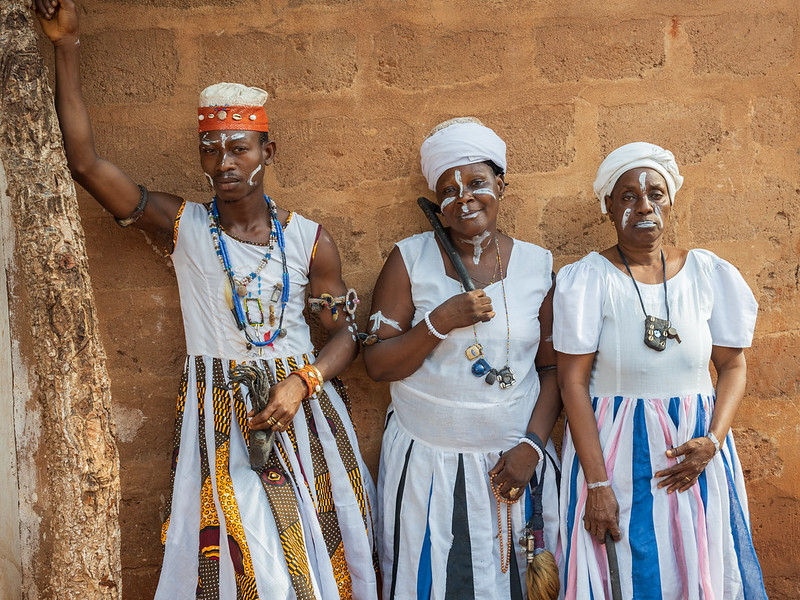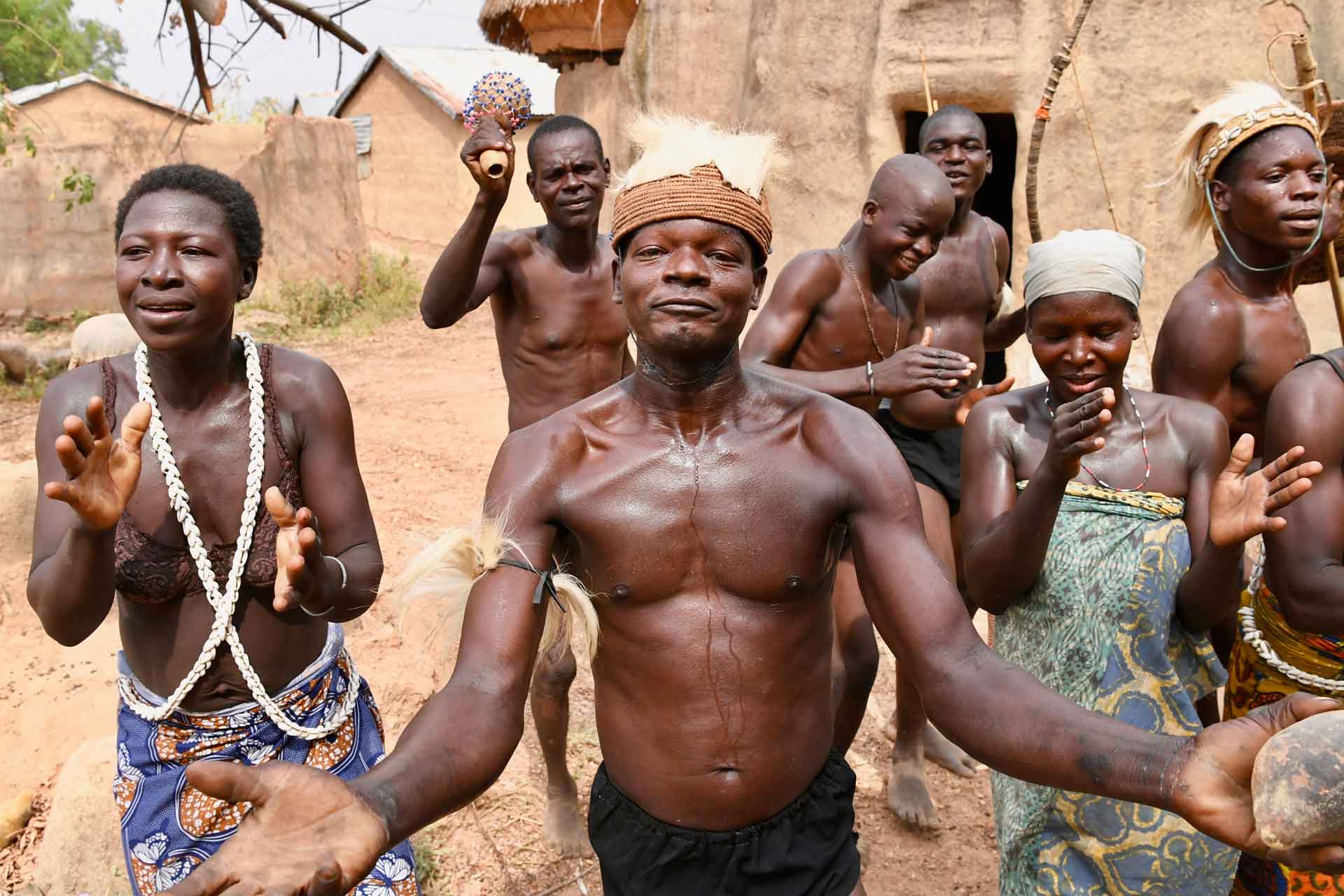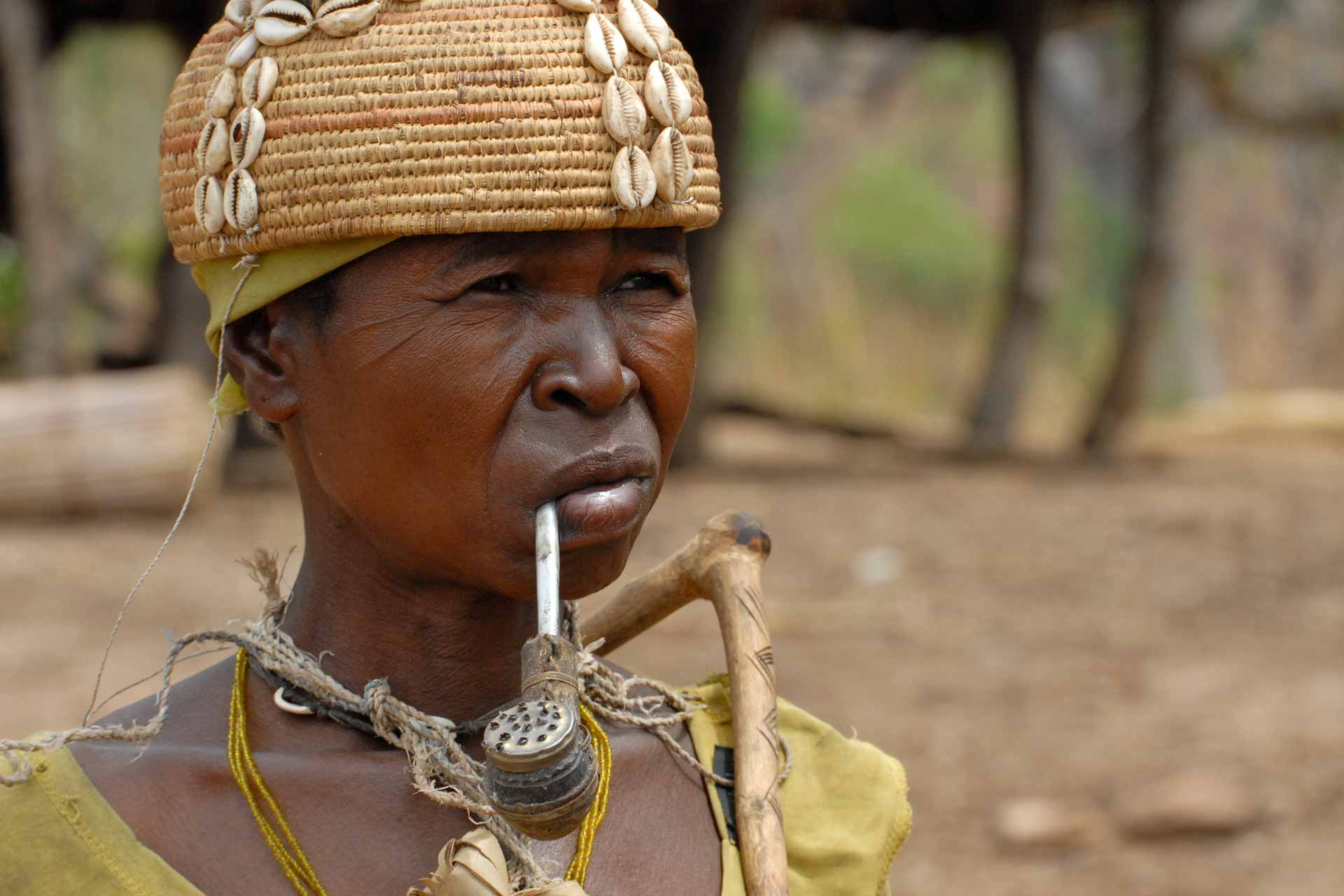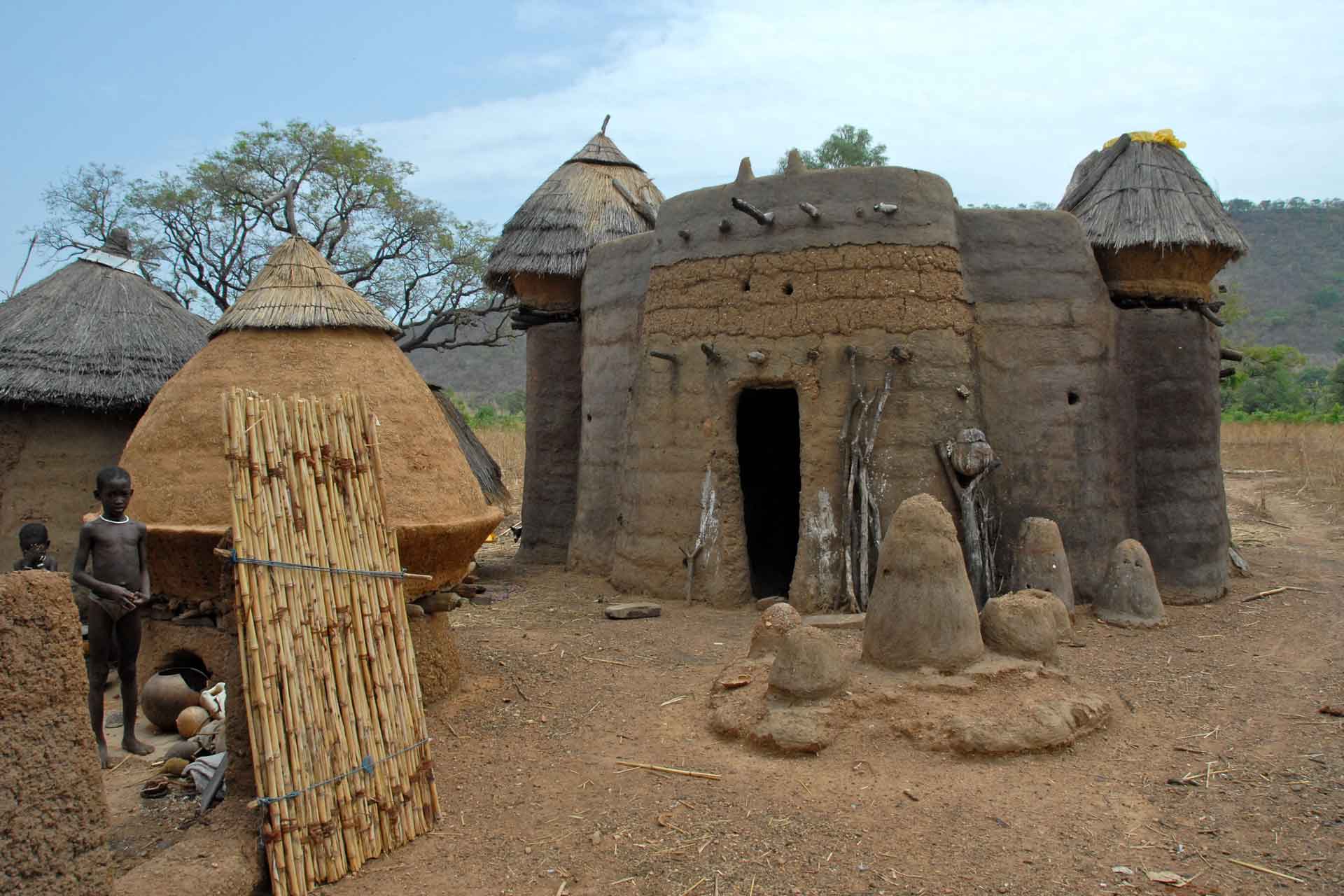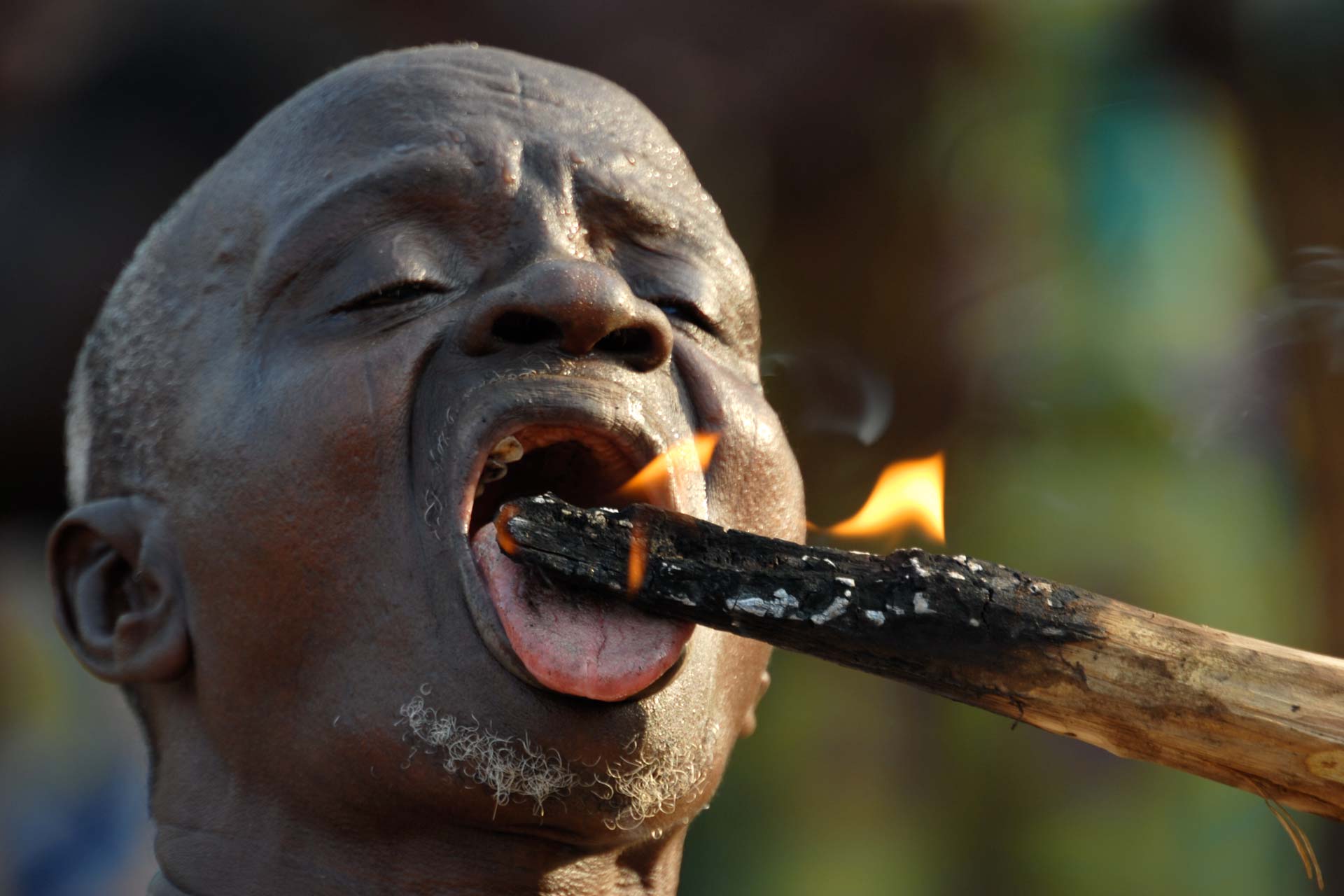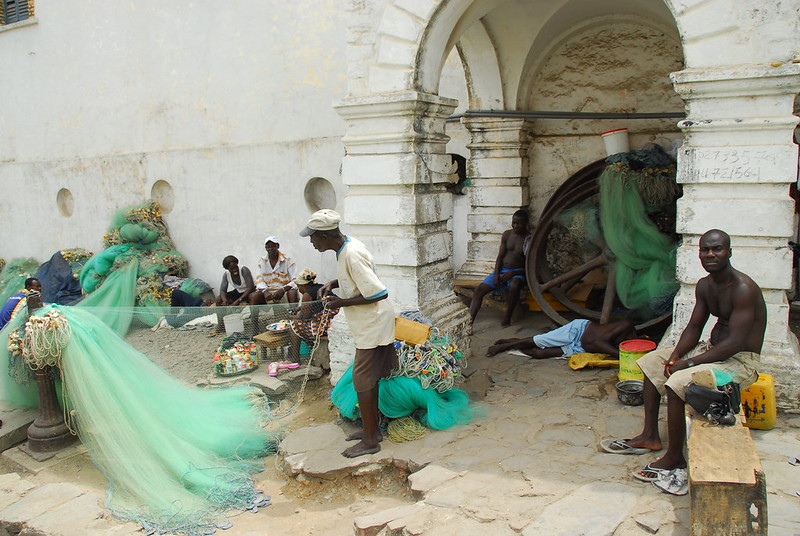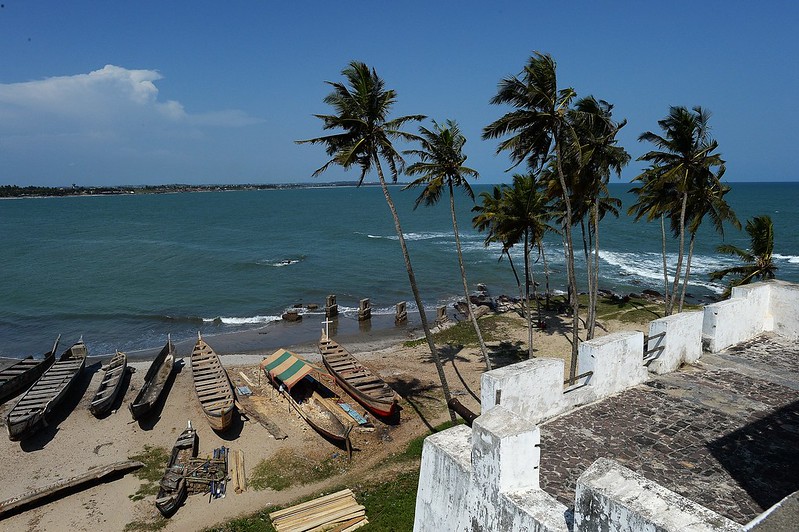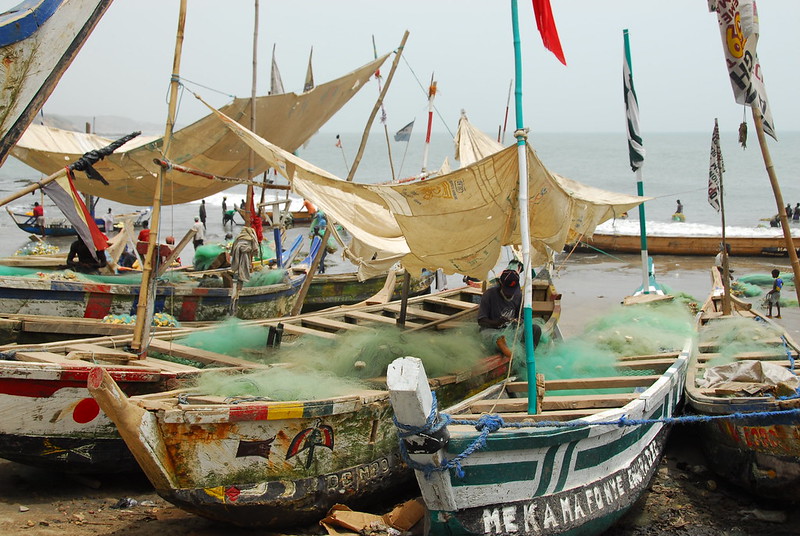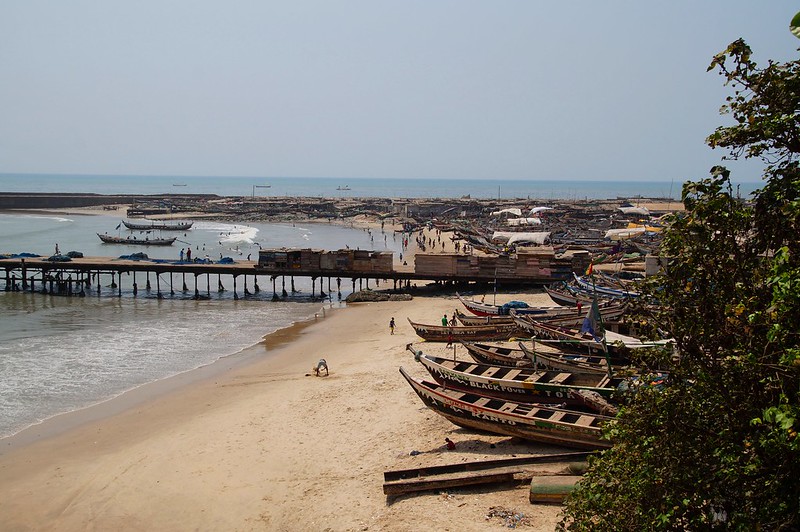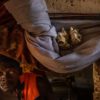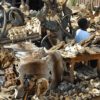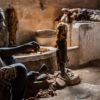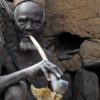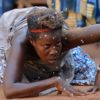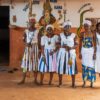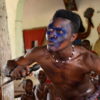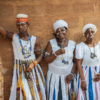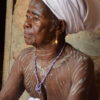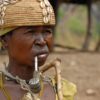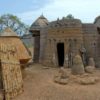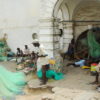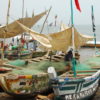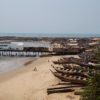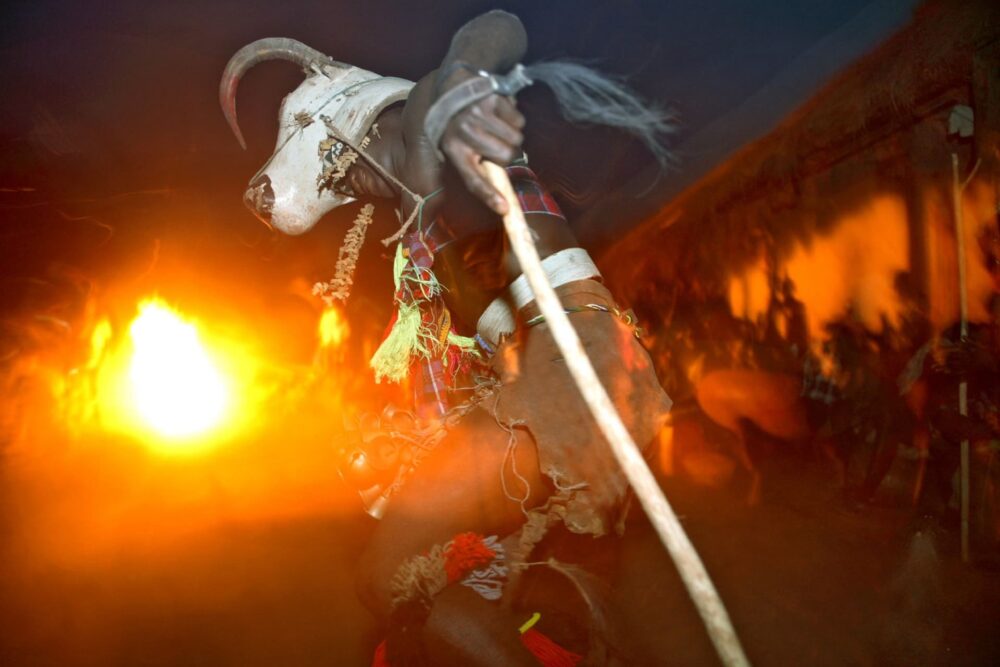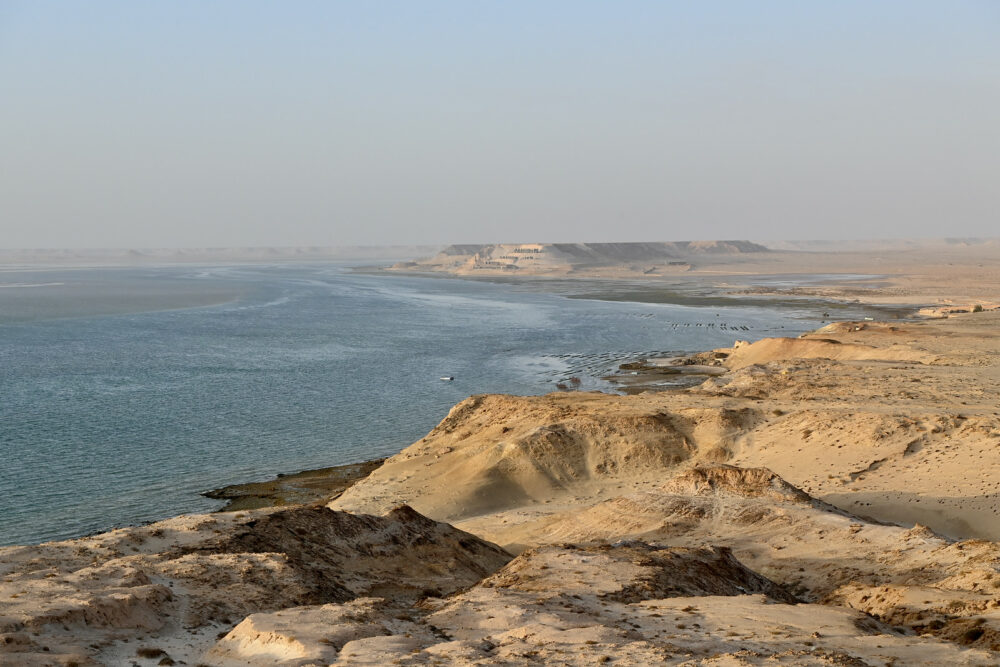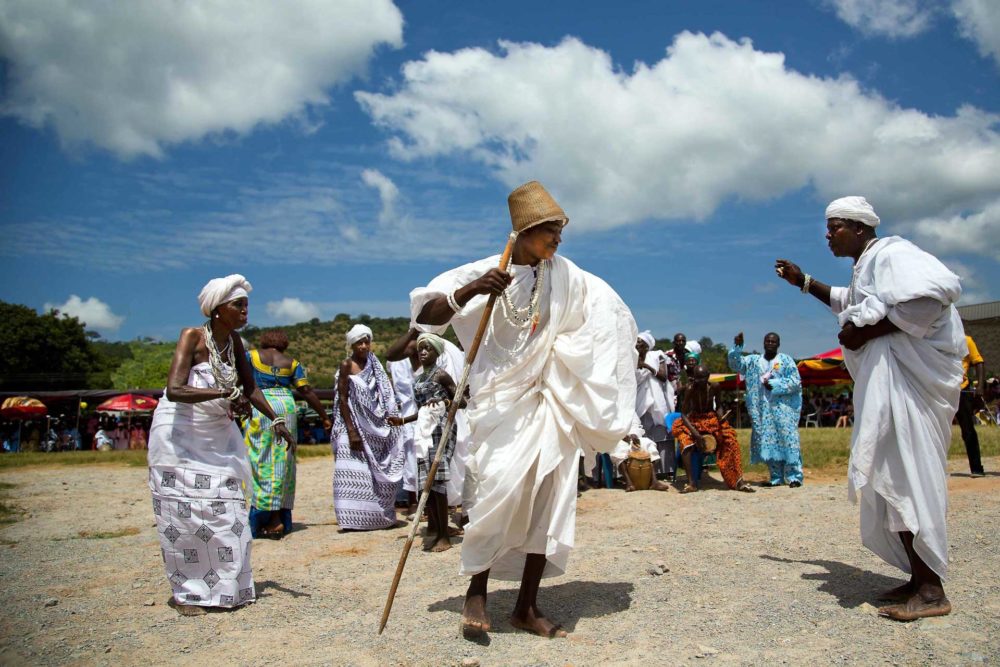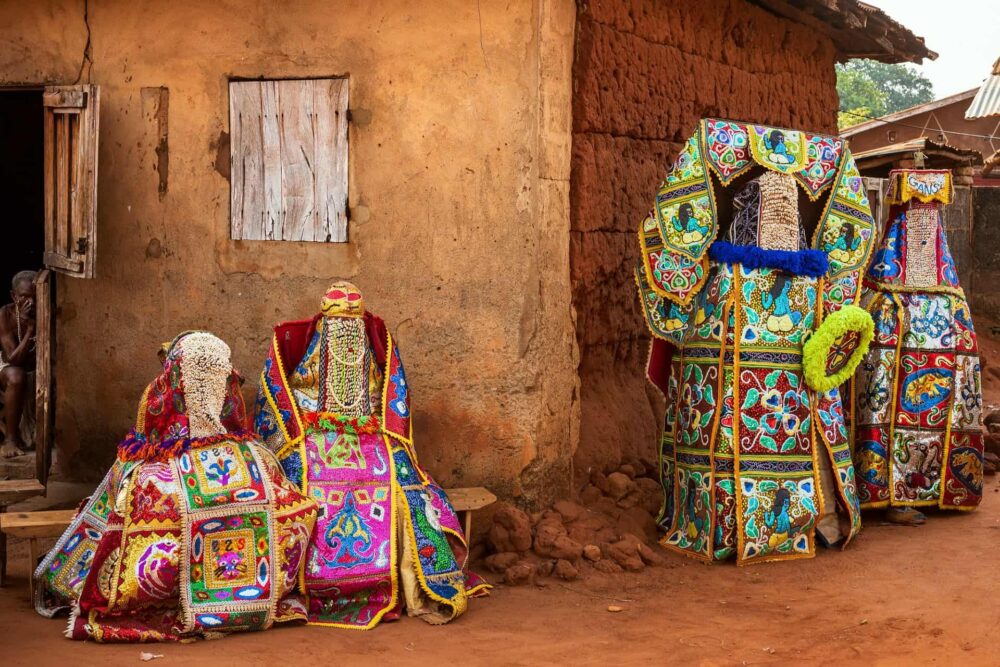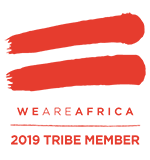Description
GHANA, TOGO & BENIN
Every second Friday of January is a very special day in Benin, a day for celebrating ancestral cults.
We have the great opportunity to see the Festival in 2 cities: Grand Popo and Ouidah.
In Ouidah, they convey in a long procession to the Door of No Return, some on foot while others by motorbike or “taxi-brousse”.
They are all dressed up in traditional costumes, white being the dominant colour.
The Festival reaches its peak with the arrival of the Dagbo Houno, the chief “feticheur”.
Dances, libations, masks and some official speeches are all part of the morning programme.
Our fantastic cultural odyssey then heads inland, through northern savannah.
We discover the Taneka tribe on a rocky mountain, the Tamberma people with their fairy-tale clay castles and finally we enter the Ashanti kingdom in Kumasi where we meet a paramount chief.
We end our tour exploring the former Slave Coast, with its haunting European forts.
Great experience combined with the choice of good accommodation.
For travellers who want to get acquainted with this incredible region … and love Africa!
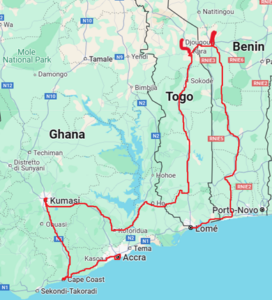
DAY 1: Lome, 07.01.2026 Gulf of Guinea – TOGO
Arrival in Lome (Togo) and transfer to the hotel.
DAY 2: Fetish market, 08.01.2026 from Lomé to Grand Popo (150 km – driving time 3 hr)- TOGO & BENIN
Lomé city tour. Lomé, the vibrant capital of Togo, is the only African city which was a colony of the Germans, the British and the French. It is also one of the few capitals in the world bordering with another nation. These elements have led to the development of a unique identity, reflected in the life-style of its inhabitants and in the architecture of the town: Lomé is indeed a cross point for people, trade and cultures, a cosmopolitan city in small size. We will visit: the central market with its famous “Nana Benz”, the women in control of the market of the expensive “pagne” (=cloth) coming from Europe and sold all over West Africa (unfortunately the market has been partially destroyed by fire); the colonial buildings in the administrative quarter where the flavour of colonial time is still very present; and the fetish market where we can find an eclectic assortment of all the necessary ingredients for love potions and magical concoctions.
In a remote village, we will join a Voodoo ceremony: the frenetic rhythm of the drums and the chants of the adepts call in the voodoo spirits who then take possession of some of the dancers. They fall into a deep trance: eyes rolling back, grimaces, convulsions, insensitivity to fire or pain. Sakpata, Heviesso, Mami Water are just some of the voodoo divinities who can manifest. In this narrow village, surrounded by the magic atmosphere of the ceremony, we will finally understand what people mean when they say: “In your Churches you pray God; in our voodoo shrines we become Gods!”
We drive to Grand Popo in Benin.
DAY 3: Voodoo festival, 09.01.2026 from Grand Popo to Ouidah (50 km – driving time 1 hr) – BENIN
Every second Friday of January is a national celebration day in Benin, honouring traditional religion. We start the day driving to a less known site where is also celebrate the Voodoo festival but in a more traditional way and without the participation of a large number of Tourist and a crowd coming from town, creating long lines of cars and congested parking lots. At our more intimate festival we will enjoy genuine Sacred Masks dances, Voudou followers with colourful costumes and red feathers, high animistic priest with their court of initiates, drumming, dancing and the enthusiastic participation of the villagers from the entire region.
Later we drive to Ouidah and the most famous festival in the country. Here in particular, dozens of voodoo ceremonies are held, calling thousands of adepts, traditional chiefs and fetish priests. We will see also different masks. The high ranked Voodo chiefs will be there wearing traditional costumes.
Since 2024, this official Voodoo festival is organized by a committee, and usually the scheduled of the festival will be announced closer to festival date.
DAY 4: Ganviè stilt Village, 10.01.2026 from Ouidah to Ganvié and back (100 km – driving time 1.5 hr) – BENIN
This morning we complete the visit of Ouidah that was one of the main slave trading post. The old town enjoys a rare Afro-Brazilian architecture and a syncretic atmosphere where the Voudou Python Temple faces the Catholic Cathedral.
Drive to Lake Nokwe and with a motorized boat to reach Ganvié, the largest and most beautiful African village on stilts. The approximately 25,000 inhabitants of the Tofinou ethnic group build their wooden huts on teak stilts. Fishing is their main activity. Ganvié has managed to preserve its traditions and environment despite the long-lasting human presence in a closed setting; and the lake is not over-fished. Daily life unfolds in the dugout canoes that adults and children row with ease using brightly coloured paddles. Aboard these canoes, men fish, women expose goods at the “floating market”, children go to school and play. Return to Ouidah for dinner and overnight.
DAY 5: Abomey,11.01.2026 from Ouidah to Abomey and Dassa (220 km – driving time 5 hr) – BENIN
Today, Sunday, we attend the service of the cult of Celestial Church. Dozens of people, dressed in white, gather for a syncretic prayer, in which Christian symbols and animist sensibilities mix, resulting in a lively celebration, punctuated with prayers and scenes of possession.
In Abomey there is the Royal Palace (currently closed for refurbishment). We will meet with the community of “forgerons,” who have served Dahomey kings for centuries in the production of weapons and other tools.
We will see the performance of the adept of Sakpata, the god of Smallpox, that dances with the breast covered by necklace of cowry shells, and of some humorous masks that makes acrobatic dances on stilts.
DAY 6: Fetish hills, 12.01.2026 from Dassa to Kara (370 km – driving time 8 hr) – BENIN – TOGO
Today is a long but intense day. First stop will be at Dankoli Fetish, a unique shrine for ancient animistic cults still practiced. Thousands of short sticks are pushed in and all around the fetish as testimony of the countless prayers for a good harvest, a happy wedding, an easy delivery, success at school etc. Once the prayers are answered, people come back to sacrifice what they had promised. Fresh traces of sacrifice, palm alcohol and oil on the fetish are witnesses of the many prayers and requests been fulfilled.
In the afternoon we discover a few old Taneka villages located on a mountain with the same name. The villages are made up of round adobe huts covered with a conical roof protected on the top by a terra cotta pot. The upper part of the village is inhabited by the young initiated and by the fetish priests who only cover themselves with a goat skin and always carry a long pipe. This ethnic group has been living on an archaeological site for centuries and it looks as if the first inhabitants (from Kabye tribe origins) moved to the mountain during the IXth century. Since then, other ethnic groups have joined thus forming melting-pot where even though each group kept its own cults and initiation rites, common religious and political institutions were defined.
As we wander around the villages along alleys bordered by rocks with ancient and mysterious carved marks, only witnesses of populations who in the past have lived in these places.
We may come across young initiated, wearing only with a cover sex and magical amulets, or elders fetishes priest wearing a skin. Taneka believe that in order to “become” a man, it is necessary to combine time, patience and many sacrifices. Initiation is a lifetime process until life itself becomes a rite of passage, therefore life should not be conditioned by a “before” and an “after” but rather as following a continuous path.
Togo border crossing at Ketao.
DAY 7: Adobe castles, 13.01.2026 from Kara to Tamberma valley and to Sokode (200 km – driving time 5 hr) – TOGO
We enter the land of Tamberma people, who, for self-defence reasons, for centuries, have taken refuge in the heart of the Atakoras, a land so difficult to access that they could flee from any attack, especially from slave traders from Muslim North Africa. According to anthropologists, their origins are close to the Dogon people of Mali with whom they share an absolute faithfulness to their animist traditions. Their strong traditional beliefs are confirmed by the presence of big shrines – of phallic form – at the entrance of their homes. Those fortified dwellings, similar in form to medieval castles, are one of the most beautiful examples of ancient African architecture. Their style impressed Le Corbusier so much that he spoke of «sculptural architecture». In fact, the houses are built by hand, layer after layer, adding round mud balls and shaping them as per the plan of the house. A kind of sensual gesture mixing strength, care and beauty. With the permission granted to us by the inhabitants we enter their homes to better understand their way of life.
In the afternoon we encounter the Kabye ethnic group. Kabye dwellings called «Soukala» are composed by several adobe huts joined by a wall – each dwelling is the domain of a patriarchal family. In the villages located at the top of the mountains, women are potters using an ancestral technique without the wheel while men are blacksmiths still working iron with heavy stones instead of hammers and anvil as in the early down of Iron Age. We follow the process of shaping a hoe.
In the evening, we arrive at the villages of Tem tribe to discover the fire dance. At the centre of the village a large fire lights up the silhouette of the participants. They dance to the hypnotic beat of the drums eventually leaping into the glowing embers, picking up burning coals, passing them over their bodies and even putting them in their mouths and swallowing them. All this without hurting themselves or showing any sign of pain. It’s difficult to explain such a performance. Is it matter of courage? Self-suggestion? Magic? Maybe it really is the fetishes that protect them from the fire.
DAY 8: Green Valleys, 14.01.2026 from Sokode to Kpalime (290 km – driving time 5 hr) – TOGO
We will head southwards, with a stop on the way in Atakpame, a typical African small town built on hills where all the products coming from the nearby forests can be found. Through their skilled work on small weaving looms, men of the region make the large brightly coloured fabric called “Kente”.
From Atakpame we move to the lush green area of Kpalime, a town with a rich colonial past, which is now an important cocoa and coffee trading market. Walk on the hills surrounding Kpalime, trough villages and farms. Under the guidance of a local entomologist, we will learn about butterflies and colourful insects.
DAY 9: Glass beads, 15.01.2026 from Kpalime to Koforidua (220 km – driving time 5 hr) – TOGO – GHANA
Ghana border crossing and continuation through the Volta Region.
We reach the Krobo tribe, known for its glass beads. Krobo people produce and wear glass beads for ceremonies and aesthetic purposes. We will visit an artisan community of beads producers and even experience the process of making our own bead. The craftsmen have been producing beads following the same long-lasting traditional technique for centuries. They use scrap glass that is grounded into a fine powder. The glass powder is then meticulously made into patterns and placed into hand-made clay moulds covered in kaolin. The beads are cooked then decorated, washed and eventually strung.
DAY 10: Ashanti, 16.01.2026 from Koforidua to Kumasi (200 km – driving time 5 hr) – GHANA
Kumasi is the historical and spiritual capital of the ancient Ashanti Empire. Ashanti was one of the most powerful empires and kingdoms in Africa. The tribute paid today to the Asantehene (King) is the best evidence of their past splendour and strength and the still strong Ashanti pride. With nearly two million inhabitants, Kumasi is a sprawling town with a unique central market, one of the largest in Africa. All kinds of Ashanti craft (leather goods, pottery, beads, textiles called Kente cloth, etc.) are found here, along with just about every tropical fruit and vegetable.
The program includes a visit to the Ashanti Cultural Centre: a rich collection of Ashanti artefacts housed in a wonderful reproduction of an Ashanti house. In the afternoon, we participate – if available – in a traditional Ashanti funeral, attended by mourners wearing beautifully red or black togas. We say “funerals” but it means a “festive” celebration: thanks to this ceremony, the deceased return as an ancestor and will protect his family. Relatives and friends gather, socialize, and celebrate his/her memory. The chief arrives surrounded by his court under the shade of large umbrellas while drums give rhythm to the dancers whose intricate moves are highly symbolic in war and erotic meanings.
DAY 11: Golden Kingdoms, 17.01.2026 Kumasi (transfers) – GHANA
In the morning continuation of the tour of Kumasi, with the visit to the Royal Palace Museum hosting a unique collection of gold jewels worn by the Ashanti court.
One cannot visit Kumasi and the Golden Ashanti kingdom without meeting one of its many traditional kings! We are privileged to be allowed into the courtyard of a great Ashanti chief. Wrapped in traditional cloth and adorned with antique solid gold jewels, he will take a seat under a large colored umbrella and discuss his role as a traditional chief in modern Ghana.
In the afternoon visit to a few Ashanti villages with traditional clothing and carving.
DAY 12: Slaves’ Castles, 18.01.2026 from Kumasi to Anomabu (250 km – driving time 4 hr) – GHANA
Drive to the coast. The coast of Ghana (formerly known as Gold Coast) has more than 50 ancient forts and castles, reminiscent of the ancient gold, ivory and slave trade.
Cape Coast castle was built by the Swedish in 1653. From 1657 to 1664 it changed hands many times as it was conquered by the Danes, the Dutch, the Fanti (a local tribe), the Swedes and finally the British. Today, it hosts a museum on the history of slave trade.
DAY 13: Elmina, 19.01.2026 Anomabu – GHANA
A few kilometres north of the coast, in the middle of a rainforest, we will discover the Kakum National Park. This park gives you a great opportunity to observe the forest from above as Kakum has a canopy walk hung high up in the trees. The Kakum canopy walkway is the longest and highest rope bridge in the world. Walking between 120 to 150 feet above the ground, you will enjoy an incredible view of the rain forest. At this height, instead of revealing their trunks, the trees offer a breath-taking view of their canopies and look as if they were trying to touch the sun and sky above.
Then we reach Elmina Castle, the oldest European building in Africa, erected by the Portuguese in the 15th century. At different times, the castle has been used as a warehouse to trade gold, ivory, and eventually slaves. The castle we visit today is the result of successive extension works and is recognized as a UNESCO World Heritage site. The old Dutch Cemetery in Elmina goes back to 1806. Outside the castle, there is a spectacular fishing village with lots of large colourful fishing boats – every day these large wooden pirogues conducted by skilled fishermen across strong ocean waves and currents, “fighting” to earn a living. The alleys in the old town have a very lively atmosphere, bringing us back to a time when Elmina was a busy colonial town.
In a neighbour town, we will discover the Posuban, shrines of the Asafo companies where the Asafo warriors still pour libations.
DAY 14: Metropolis,20.01.2026 from Anomabu to Accra (180 km – driving time 3 hr) – GHANA
Drive to Accra.
Accra, the capital of Ghana, has kept its unique identity despite the fast-paced development of the last decades with its modern buildings and large avenues. The luxuriant administrative area, punctuated with elegant villas built during the first half of the 19th century, reminds us that was the most flourishing colony in Africa.
We explore James Town historic neighbourhood, inhabited by Ga people. Facing the Ocean is where native people life, fully unfolds: a village surrounded by the city! Here all economic activities follow very different rules from the ones governing “the city” (business area), just a few hundred meters away. We continue with the visit of a workshop specialized in “fantasy coffins”. These unique handcrafted coffins can reflect any shape: fruits, animals, fish, cars, airplanes…. The only limit being imagination! Started in Accra, these flamboyant coffin designs are by now collected worldwide and exposed in museums.
In the evening transfer to the airport for the flight out.


